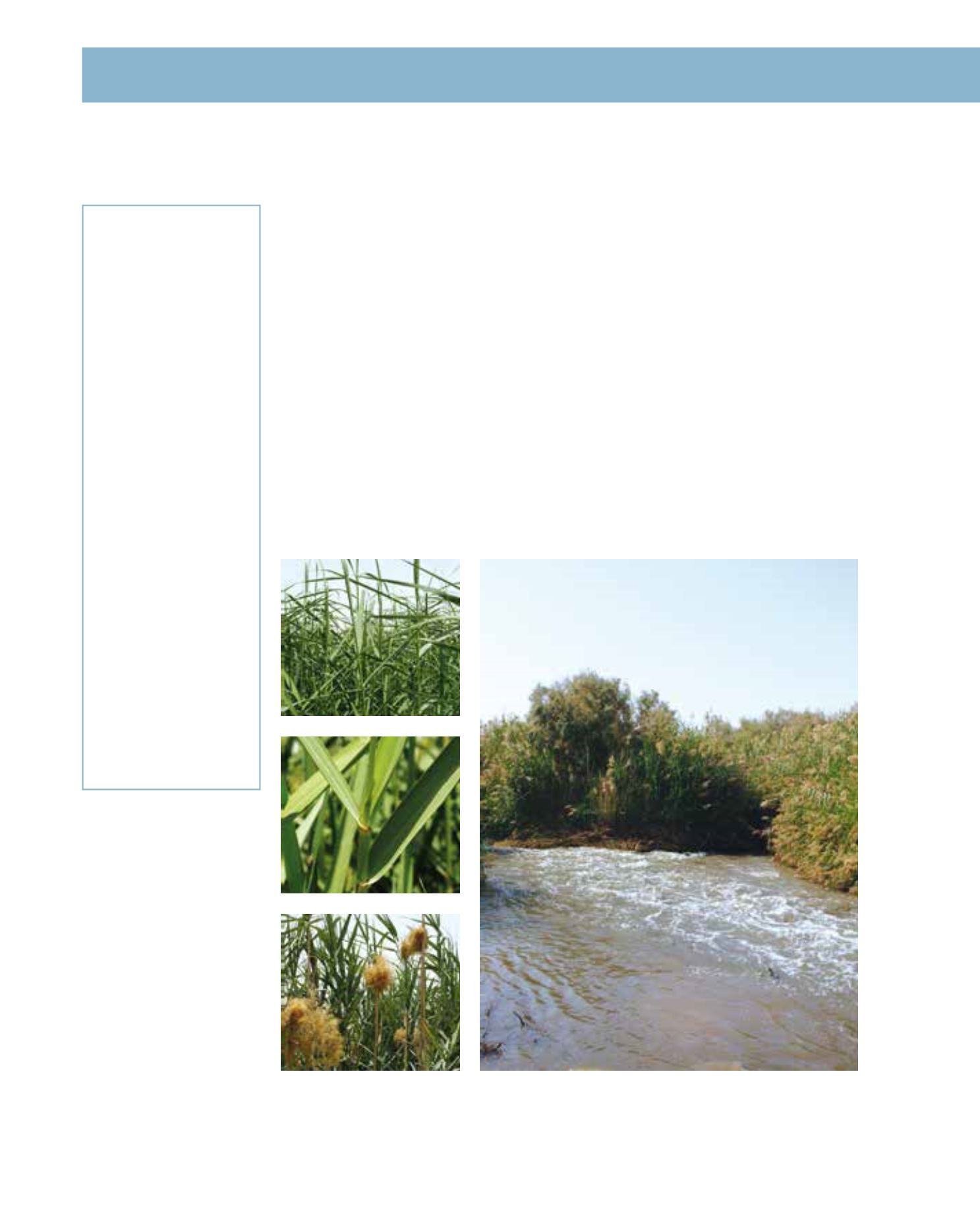

GENERAL
Origin
:
temperate,
arid, sub-arctic,
sub-Mediterranean,
Mediterranean,
sub-tropical
Vigour
:
fast growing
Humidity
:
semi-arid, semi-
humid
Propagation :
division, direct
sowing
Maintenance :
high
CONDITIONS
Urban climate :
resistant
Dessication :
resistant
Stagnant water :
resistant
Irrigation
:
high
Salinity/ppm :
very high (20000
ppm)
Hardiness
:
-25°C, heat
tolerant
SHAPE
Type
:
grasses
Height
:
0.9 m-2.5 m
Spread
:
1 m-3 m
Foliage
:
deciduous
FLOWER
Colour
:
violet, magenta,
black, white
Size
:
25 cm
Period
:
September -
October
FRUIT
Type of fruit :
caryopsis
Fruit size
:
1 cm
The common name for this plant is Reed Grass, or in Arabic, ghab. Its area of distribution ranges
from Alaska and Australia to the Balkans. Phragmites is a perennial grass which is both heat-
and frost-tolerant. It grows to a height of between 90 cm and 2.5 metres. It is a fast-growing grass
with strong rhizomes. It can be invasive in situations where all conditions are optimal for its
development. It can also withstand high salinity. The flowers appear as impressive florets between
20 and 35 cm in size. The spike has a violet-magenta colour. The inflorescence appears in early
September and remains on the plant for a long time, keeping the grass attractive throughout the
winter. Reed Grass grows close to water edges, on shorelines. Phragmites is well known in the
Wadi Hanifah and the Al Hair Lakes. Because it is such a strong plant, its use is not advisable for
small ponds. For natural water features such as the Al Hair Lakes, however, it is a valuable plant
species because of its water-cleansing properties. It helps to maintain the natural water ecosystem
in equilibrium. Reed Grass is a phytoremediation or water-treatment plant, and provides a habitat
for many different varieties of wildlife. Accordingly, Phragmites is a useful plant for bank stabili-
sation, open country and environmental consolidation. It can also be used as screen. It becomes
a dominant plant very quickly. Recommended propagation measures are by runners, division
and direct sowing. Maintenance is recommended through periodically pruning where necessary.
233
Phragmites australis,
Poaceae
Reed,
aqraban hajna, ghab
















